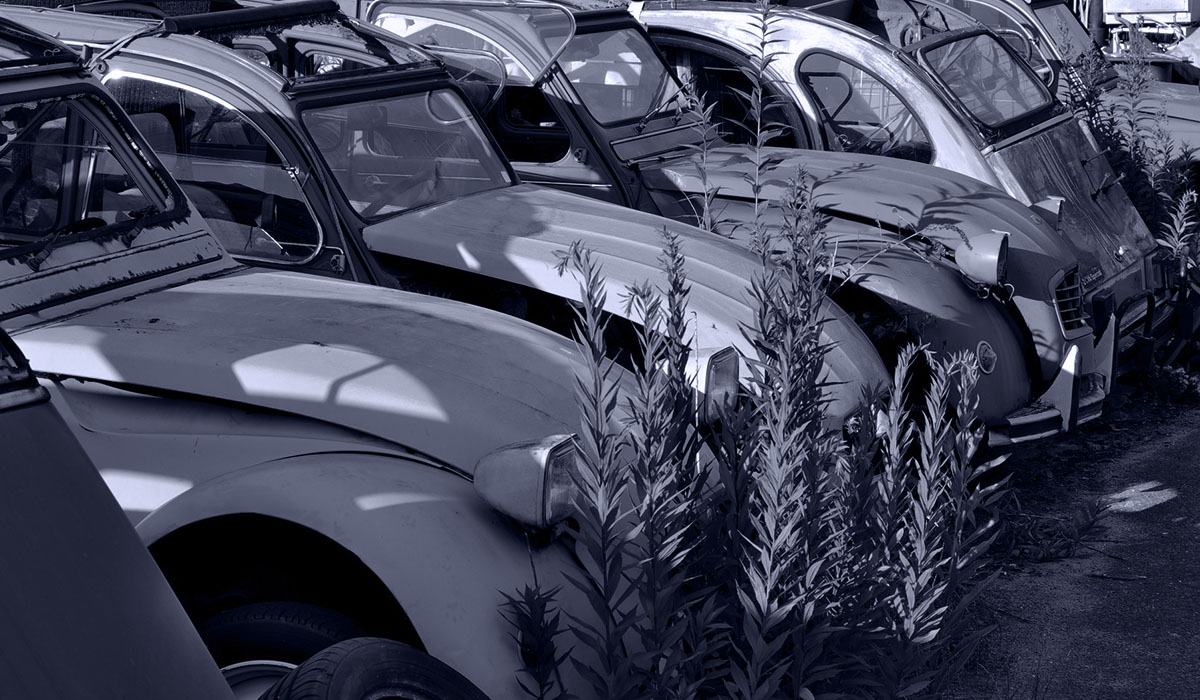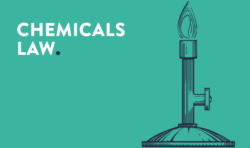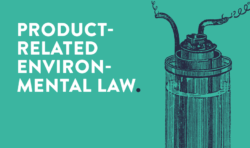The Commission proposes measures to improve the circularity of the automotive industry in relation to the design, production and end-of-life treatment of vehicles. Its overall objective is to modernise existing EU legislation and improve the functioning of the EU internal market, while reducing the negative environmental impacts associated with the design, production, use and treatment of end-of-life vehicles and contributing to the sustainability of the automotive and recycling industries.
A. Background
Every year, more than six million vehicles in Europe reach the end of their service life. Inappropriate management of end-of-life vehicles not only leads to massive economic losses, but also contributes to environmental pollution. The recent evaluation of the End-of-Life Vehicles Directive and the 3R Type Approval Directive has shown that significant improvements are needed to drive the automotive industry’s transition to a circular economy. The aim is to reduce the environmental impact associated with the production and end-of-life management of vehicles and to strengthen the sustainability of the automotive and recycling industry in Europe.
The proposed Regulation is in line with the objective of the European Green Deal and the Circular Economy Action Plan to achieve a more sustainable and resilient automotive industry. It is closely linked to several important legislative initiatives and supports their implementation. Examples include the Critical Raw Materials Act, the Battery Regulation, the Waste Framework Directive, the WEEE Directive and the Ecodesign Regulation for Sustainable Products.
B. Impact assessment
An impact assessment based on the initiative identified four problem areas that should be addressed at EU level:
- There is a lack of integration of circularity in vehicle design and manufacturing. This leads to a high dependency on primary raw materials.
- The quality of end-of-life treatment of vehicles is not optimal in relation to the existing potential to obtain higher environmental and economic value through recycling.
- There is a significant proportion of “missing vehicles” that are covered by the End-of-Life Vehicles Directive but are not collected but stored or disposed of elsewhere. In addition, a large number of unroadworthy and polluting used vehicles are exported from the EU every year.
- Vehicles that do not currently fall within the scope of the End-of-Life Vehicles Directive have a circular potential that has not yet been utilised in relation to the objectives of the Green Deal.
C. Package of measures proposed by the Commission
The EU has developed a package of measures in this proposal (hereinafter referred to as the “Draft Regulation”) in order to address the aforementioned problems in regulatory terms.
I. Application to additional vehicles
The scope of application, which previously only covered passenger cars (M₁) and light commercial vehicles (N₁), will be gradually extended to other vehicles such as those in categories L₃e to L₇e as well as lorries, buses and trailers (M₂, M₃, N₂, N₃, O) (see Art. 2 (1) (b) and (c) of the Draft Regulation).
II. Circular design
As part of the circularity strategy to be drawn up by the manufacturer, vehicle manufacturers are obliged in particular to provide information on the proportion of recycled materials in new vehicles (cf. Art. 9 Para. 3 in conjunction with No. 4 Part A of Annex IV of the Draft Regulation) and detailed and clear information on the removal and replacement of parts, components and materials (cf. Art. 11 Para. 1 in conjunction with Annex V of the Draft Regulation). According to Art. 7 of the Draft Regulation, vehicles must be designed in such a way that certain parts and components in vehicles are easy to remove and replace. This is intended to facilitate dismantling in order to increase reuse and recycling rates.
Another aspect of recyclability is the maintenance of the substance restrictions already known from the End-of-Life Vehicles Directive in Art. 5 in conjunction with Annex III of the Draft Regulation. It should be noted that the concept of the draft stipulates that no new substance restrictions can be added in this context, only existing restrictions can be amended. New substance restrictions are to be completely centralised under the existing regimes under the REACH and POP Regulation.
III. Use of recycled materials
According to Art. 6 of the Draft Regulation, at least 25% of the plastic used to manufacture a new vehicle must consist of recycled plastic from consumer plastic waste. In turn, at least 25% of this must come from recycled plastic from end-of-life vehicles. The details of the calculation and verification are to be specified in an implementing act to be published by the Commission two years after the regulation comes into force.
IV. Extended producer responsibility regime
The Regulation is intended to introduce a regime of extended producer responsibility for vehicle manufacturers (Art. 16 et seq. of the Draft Regulation). In addition to a registration obligation in each Member State in which the manufacturer places vehicles on the market, the manufacturer must in future also bear the financial and organisational responsibility for the take-back, collection and treatment of end-of-life vehicles. However, only those costs that cannot be offset against the value of the recycled materials and components by the authorised recycling facilities are to be imposed on the manufacturer.
In addition, the Member States are required to provide the necessary incentives for maintenance and repair companies to support the reuse, remanufacturing and overhaul of parts and components (see Art. 33 of the Draft Regulation).
V. Higher collection rate
In order to significantly increase the number of end-of-life vehicles lawfully treated in the EU, binding criteria for distinguishing between used and end-of-life vehicles (see Art. 37 in conjunction with Annex I of the Draft Regulation), regular inspections (Art. 46 of the Draft Regulation), the technical inspection of end-of-life vehicles (Art. 45 of the Draft Regulation) and extended requirements for certificates of destruction will be introduced. Finally, the export of used vehicles is also to be subject to strict criteria. In particular, this means that used vehicles may only be exported as such in accordance with Art. 38 Para. 3 of the Draft Regulation if they are roadworthy in the country of export and have been clearly identified via the VIN (vehicle identification number) and registered with customs for export.
VI. More efficient treatment
The Regulation introduces a ban on the landfilling of shredder residues from vehicles. According to Art. 35 of the Draft Regulation, fractions of end-of-life vehicles that contain non-inert waste that is not processed by post-shredder technology may not be accepted in a landfill. In addition, according to Art. 34 Para. 2 of the Draft Regulation, at least 30% of plastics from end-of-life vehicles should be recycled. This should increase the utilisation of (critical) raw materials and lead to an improvement in the quality of secondary plastics.
D. Kick-off for an improved circular economy
With this initiative, the EU Commission plans to achieve significant benefits for the environment: An annual reduction of 12.3 million tonnes of CO₂ equivalents is expected by 2035, better recycling of 5.4 million tonnes of materials and the collection and treatment of up to 3.8 million additional end-of-life vehicles in the EU. The Regulation should also contribute to energy savings, a reduction in the EU’s dependence on materials from third countries and sustainable and circular business models.
However, the Commission also sees economic potential for the EU as a business location. By 2035, net revenues worth EUR 1.8 billion are expected to be generated and over 22,000 additional jobs created. While the transformation can be a considerable burden for small and medium-sized enterprises (SMEs), the Commission also sees a great opportunity for the repair and recycling industry, which is predominantly characterised by SMEs.
Outlook
Even though the legislative process is still in its infancy, the proposal is attracting a great deal of attention both in the relevant specialised media and in the general press. The discussion often centres on the criteria for the start of a vehicle’s waste status and the resulting restrictions on the repair options for used vehicles, which would have a considerable, often practically incomprehensible impact on repair workshops as well as private vehicle owners. Overall, considerable effects are to be expected, particularly in Germany with its strong automotive industry, so that the proposal will be closely monitored and commented on by all affected sectors and stakeholders.
A transitional period of twelve months will generally apply from the date of entry into force, although longer transitional periods are planned for some obligations and vehicle categories. In particular, the obligations from Chapter II with the requirements for recyclability are all only to apply after a transitional period of 72 months from the entry into force of the regulation.
Do you have any questions about this news, or would you like to discuss it with the author? Please contact: Michael Öttinger





